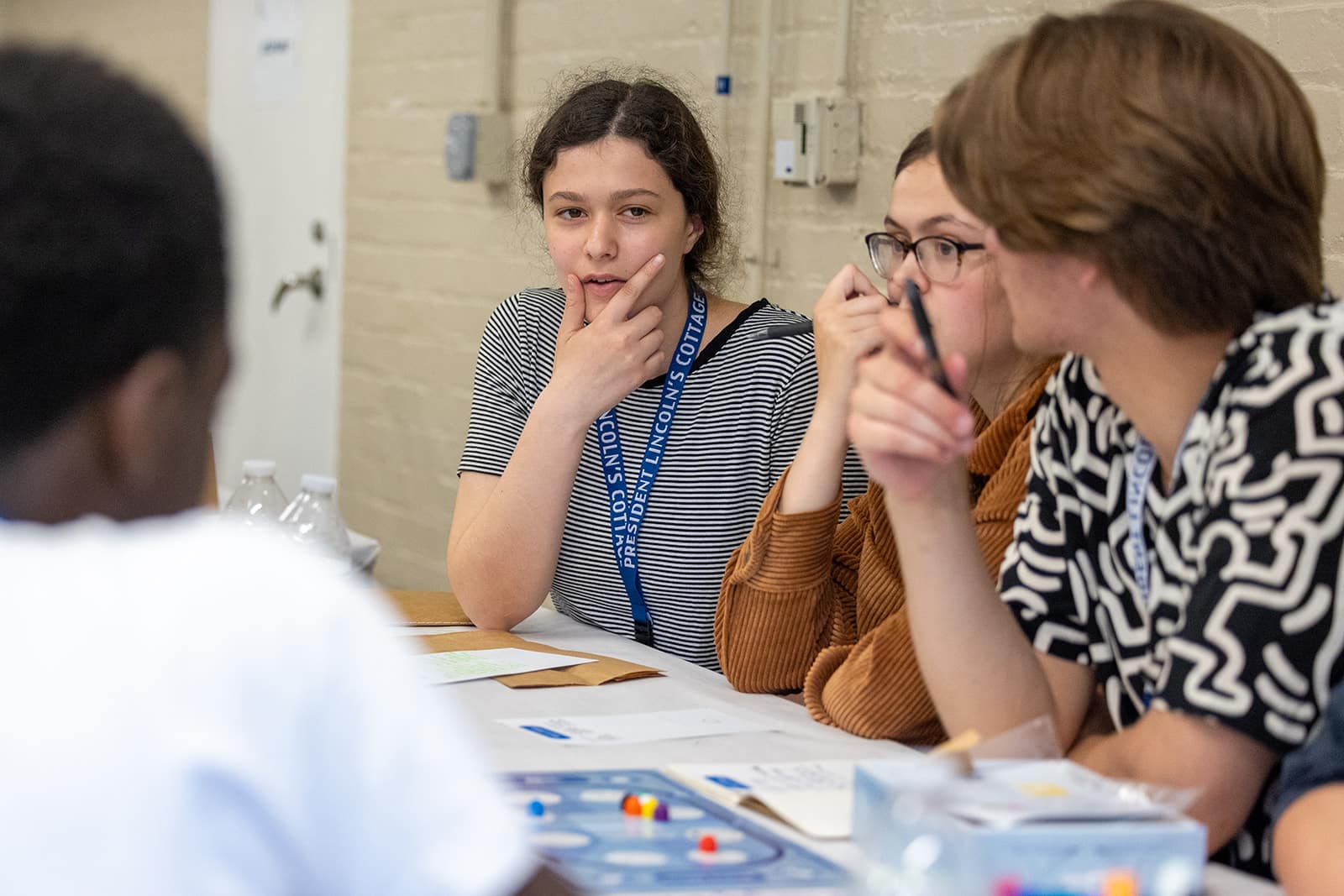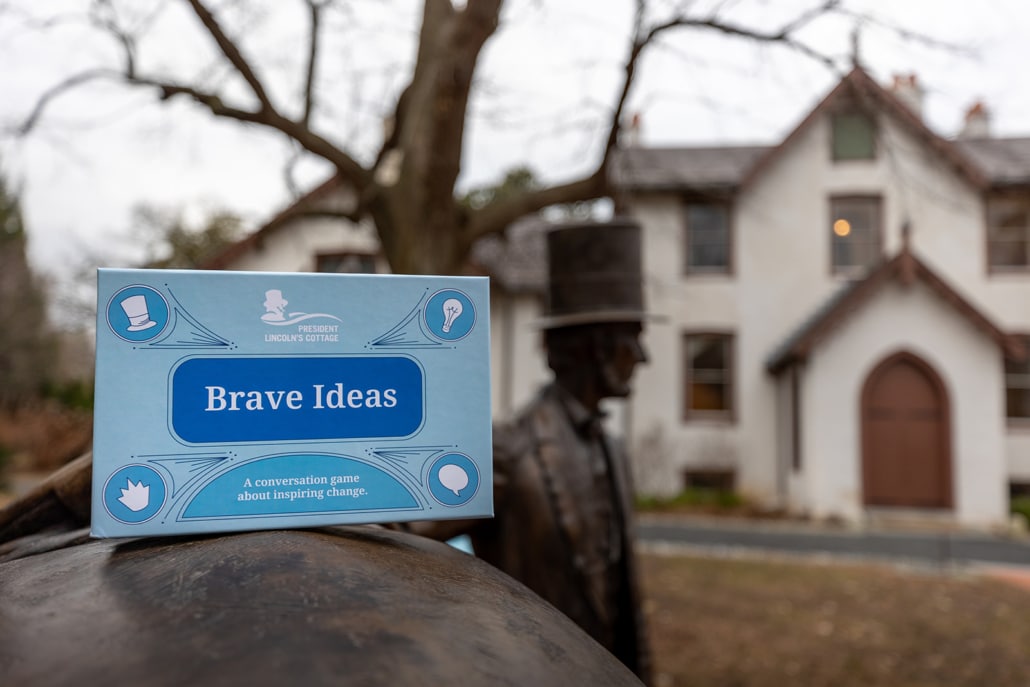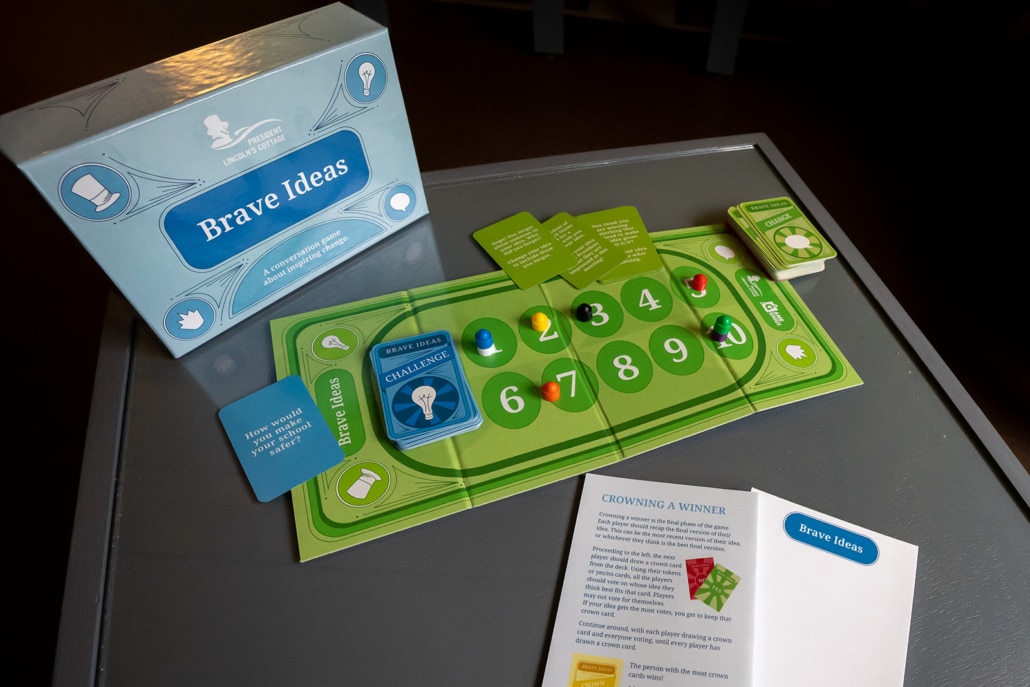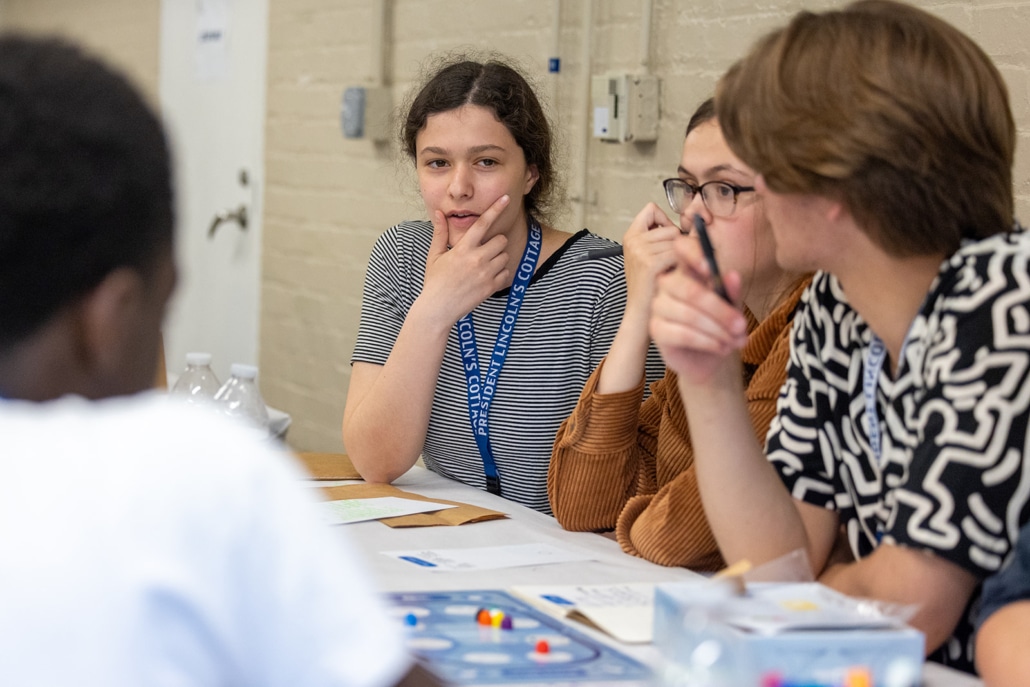
The world can’t be changed through hard work alone. Often it takes playfulness to innovate. This is the theory behind the Brave Ideas Game from President Lincoln’s Cottage.
In partnership with Game Genuis, Cottage teacher-in-residence, Brian Field, and with support from the Marder-Vaughn Center for Historic Sites, Interpretation, and Education at the National Trust for Historic Preservation, this game designed to inspire brave ideas was born.
“Kids have bold and brave ideas every day,” says Director of Programming Callie Hawkins. “Those ideas deserve nurturing.”

The Brave Ideas Game by the Cottage statue. Photo by Brian Rimm
The game has its roots in the history of the Cottage, which was the place where Abraham Lincoln worked, and reworked, and reworked again his ideas surrounding the Emancipation Proclamation. These ideas changed the nation, and President Lincoln’s Cottage is dedicated to inspiring the same avenues for innovation in today’s world.
The result is a game that inspires laughter, discussion, and innovation through social-emotional learning (SEL). Hawkins explained the inextricable link between Civics and SEL along with the way play can strengthen that link, “Spaces for civic conversation and education are critical to students’ understanding of themselves and their role in society. Done well, games can create this space and build skills in communication and consensus building, self and collective awareness. Games can also foster civic engagement, human connection, and inclusivity – all vital elements in preparing students to leave school as engaged members of society.”
Field expanded on the potential of gameplay in the classroom in a conversation with the Cottage last year, “Gameplay breaks down students’ hesitancy,” he explained. “They get a little more goal-oriented, and that sidetracks the vulnerability they sometimes feel in larger classroom settings…
…A lot of the time we think that we are either creative or we are not and the reality is that it can be learned.”

The Brave Ideas Game. Photo by Brian Rimm
The game itself features cards with different real-world challenges. The players brainstorm solutions either individually or in groups. Then a “change card” with an obstacle or challenge is introduced so they have to iterate on their ideas accordingly. At the end of the round, students use “crown cards” to vote for the idea they think is riskiest, or most expensive, or most outside the box. In the end, the idea with the most crown cards “wins.” “That really appealed to young participants’ desire to have a winner and also invites an even deeper level of dialogue,” Callie explained.
Although it was created for elementary and middle school classrooms, the game is fun for groups of all ages and in various settings. President Lincoln’s Cottage team played it in January, and we solved an important recycling challenge on our campus.
The game can be purchased HERE, for your favorite classroom, or even for your home! All proceeds benefit President Lincoln’s Cottage and our innovative programming.

Students Oposing Slavery participants playing the Brave Ideas Game. Photo by Brian Rimm
Listen below to watch a Students Opposing Slavery participant describing the Brave Ideas Game.
